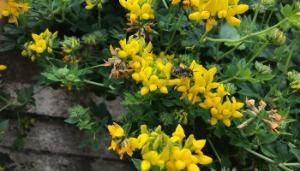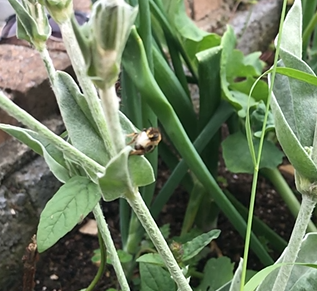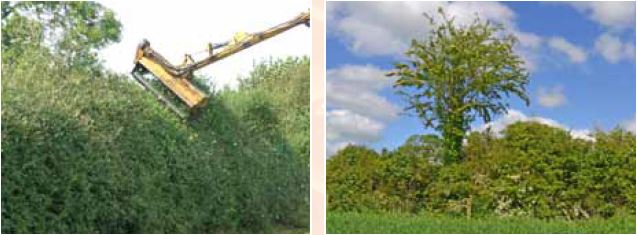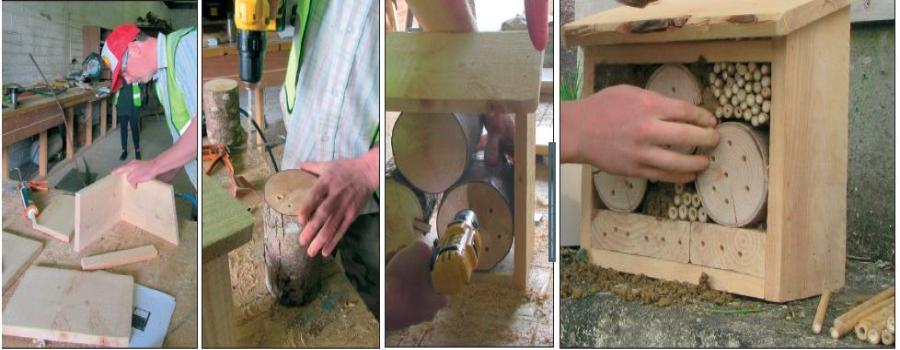Bees
There are over 20,000 bee species worldwide and 102 of these are native to Ireland. One third of bee species are threatened with extinction.
There are over 20,000 bee species worldwide and 102 of these are native to Ireland. One third of bee species are threatened with extinction.
Each bee species is unique, one of our 102 bee species provides us with honey that can be sold commercially.

Some bees are kleptoparasites, behaving in a similar way to cuckoo birds, laying their own eggs in nests that were created by a different species.
Bees have their differences but they all need flowers and flowers need bees too. All bees act as pollinators, and some bees are considered better pollinators than others. An exception to this are ‘vulture bees’, a small group of North American stingless bee species that feed on rotting meat. They use the meat as their protein source, but still make honey from nectar.
By pollinating Irelands’ wild plants, bees help maintain the beautiful Irish landscape that is vital for our tourist industry.
Just like people, bees have preferences towards certain plants and some bees are better at pollinating some plants over others. Bumblebees for example have a high frequency buzz that is great for pollinating strawberries.
Bees require food all year round, requiring a diversity of flowering plants in the landscape.
The trees, shrubs, climbers and wildflowers listed below will provide year round food for bees
The trees, shrubs, climbers and wildflowers listed below will provide year round food for bees

Irish hedgerows are full of flora and fauna if well managed. They are of value to pollinators only if flowers are present. A variety of hedgerow types is desirable on every farm.
A hawthorn hedge cut every year will not produce many flowers. Consider cutting the hedge on a 2 or 3-year rotation.

Flowers under hedgerows are an important source of nectar and pollen. Consider minimising herbicides and fertilisers close to hedges.
Allow flowering plants to flower. Do not spray. Do not cut until after flowering
Consider putting up a ‘bee box’ or creating a ‘bee scrape’, an area of bare soil. Solitary bees will only travel 300m from their nest so ensure there are flowers nearby.
Spraying may be necessary but every time you don’t spray you are helping. All fungicides, herbicides and insecticides are harmful to bees. If you must spray your tillage crops spray early morning and late evening when honey bees are less active. Notify local beekeepers
Consider putting up a ‘bee box’ or creating a ‘bee scrape’, an area of bare soil. Solitary bees will only travel 300m from their nest so ensure there are flowers nearby.
Some solitary bees are cavity nesters and nest in hollowed twigs or holes in wood or masonry.
Making a Bee Box
When placing the bee box, it is important to have the box near flowering plants, at least 40 cm off the ground, in a sheltered and sunny spot facing south to south-west and fixed firmly, as bees will be navigating home to the bee box.

We are in a biodiversity crisis and we need to maintain our biodiversity to sustain our food production. One-third of our bee species is threatened with extinction. In Ireland, thanks to numerous citizen scientists we have long-term data on bumblebee trends. Unfortunately, the trend is not good, but we are all in a position to help and the bees need all the help they can get.
Visit the Pollinator website for more information
Teagasc supports the All Ireland Pollinator Plan, which can be viewed here
In this video, Aoife Leader, Walsh Scholar explains the importance of bees to the environment and biodiversity on Irish farms. Aoife identifies the simple measures farmers can take to help protect bees on their farm.